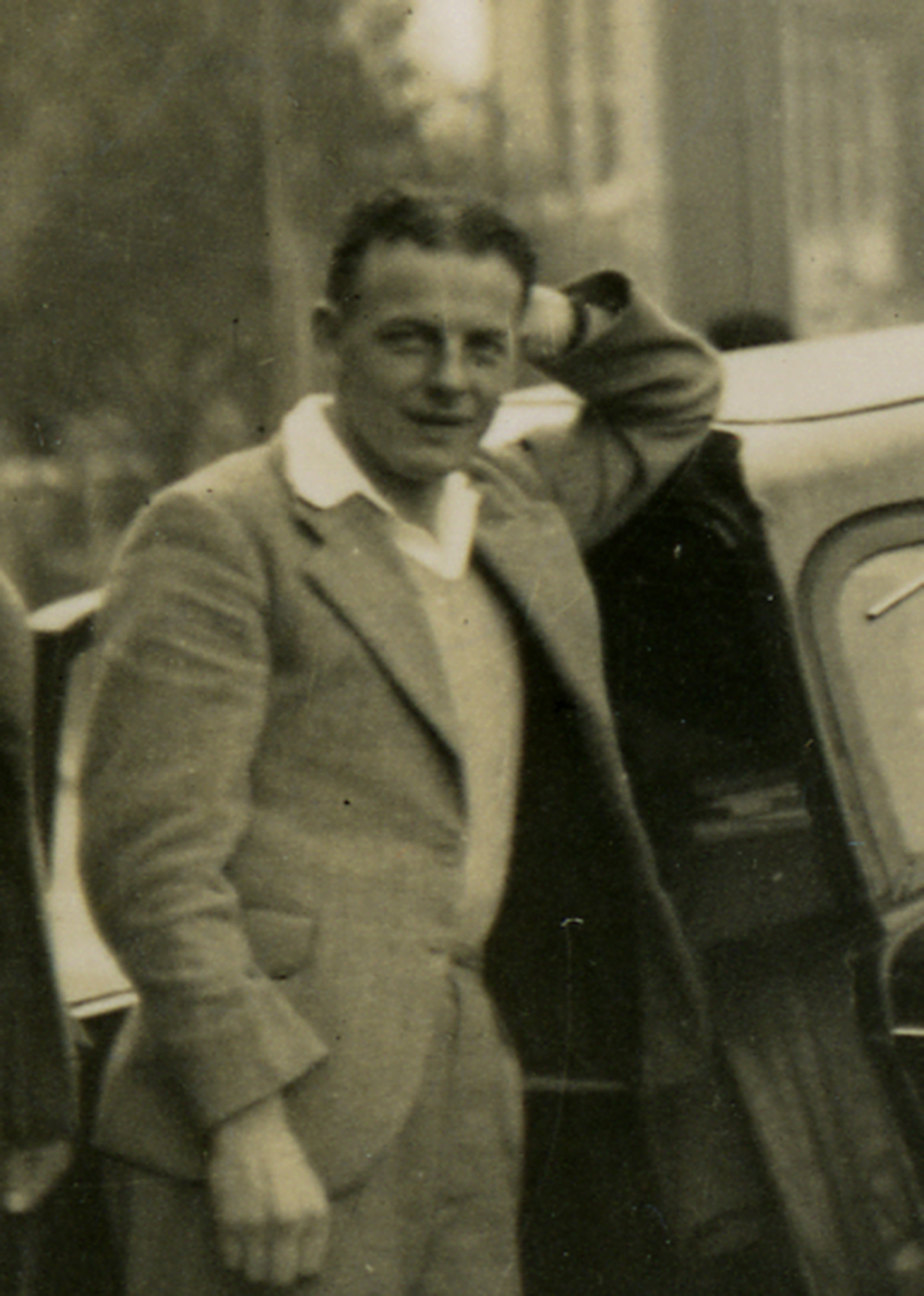

Display No. 9J
TWOMEY, Bernard Lawrence
Bernard Twomey joined the New Zealand Division of the Royal Navy in December 1940 as a Sick Berth Attendant. He spent nine months serving in HMS Achilles whilst she was operating in the Pacific. At the end of 1941, Twomey changed branches to the Fleet Air Arm (FAA) and was immediately sent to Britain for training. He spent nine months training in HMS St Vincent, a FAA shore establishment, but did not pass his training. Instead, Twomey began training in HMS Raleigh to become a Seaman Officer. He completed his training in 1943 as Temporary Sub-Lieutenant. He was posted to Combined Operations to man the fleet of amphibious assault craft. By May 1944 he was based in HMS Copra, a Combined Operations Training establishment in Scotland preparing for the Normandy Landings. He was awarded a Distinguished Service Cross (DSC) for actions with the 672nd LCM (Landing Craft Mechanised) Flotilla during the Operation Dragoon landings in Southern France in 1944. Twomey returned to New Zealand on leave in November 1944 and was posted to HMNZS Philomel in March 1945. He returned to the United Kingdom in April 1945 and was attached to HMS King Alfred, a training establishment in Sussex.
After the war, Twomey returned to New Zealand and joined the Royal New Zealand Navy (RNZN) as a regular officer. He spent time in HMNZS Arabis, a converted minesweeper operating in the Hauraki Gulf before joining the crew of HMNZS Achilles on the ship’s journey back to Britain. Until June 1947 Twomey was based in HMS Excellent at Portsmouth. He also spent six months serving in HMS Mauritius in the Mediterranean. Twomey returned to New Zealand in December 1947, and over the next ten years served in various RNZN ships including HMNZ Ships Kiwi, Kaniere, Tutira, Bellona, Black Prince, Maori and Stawell. Twomey served in HMNZS Tutira in the first deployment to Korea in 1950. He took passage to Britain for further service in the Royal Navy in February of 1957, but died a few months later in a car accident.
Awarded medal(s)
Medal Description [Left to Right]:
The Distinguished Service Cross (DSC)
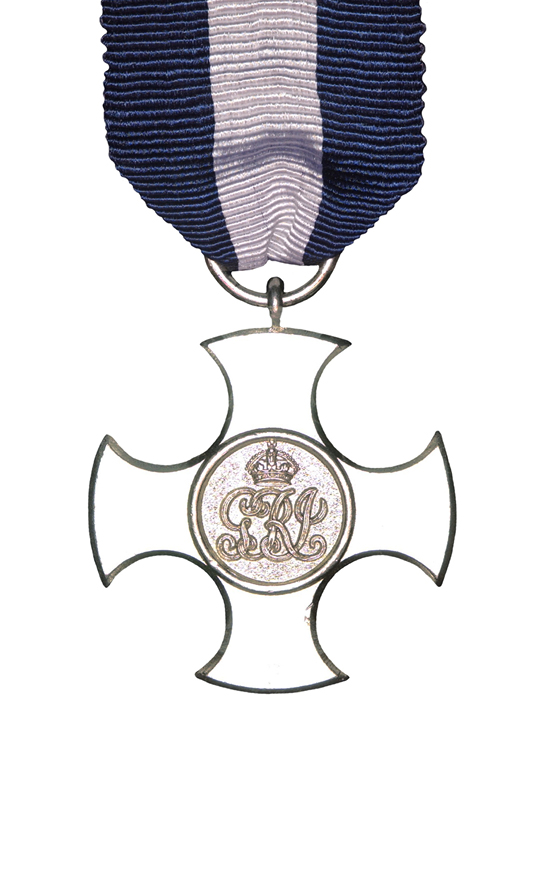
Instituted in 1901, as the Conspicuous Service Cross, this award was renamed the Distinguished Service Cross (DSC) in 1914. It was awarded to junior naval officers and senior naval ratings for courage and devotion to duty on active service. Eligibility was later extended to officers of the Merchant Navy and to Army and Air Force officers serving in HM Ships. Many New Zealand naval officers were awarded the DSC for their actions during the Second World War. Since 1993 the DSC has been made available to all ranks in the United Kingdom. The ribbon has three equal stripes of dark blue, white and dark blue. Bars are awarded for subsequent courageous acts.
The 1939-1945 Star
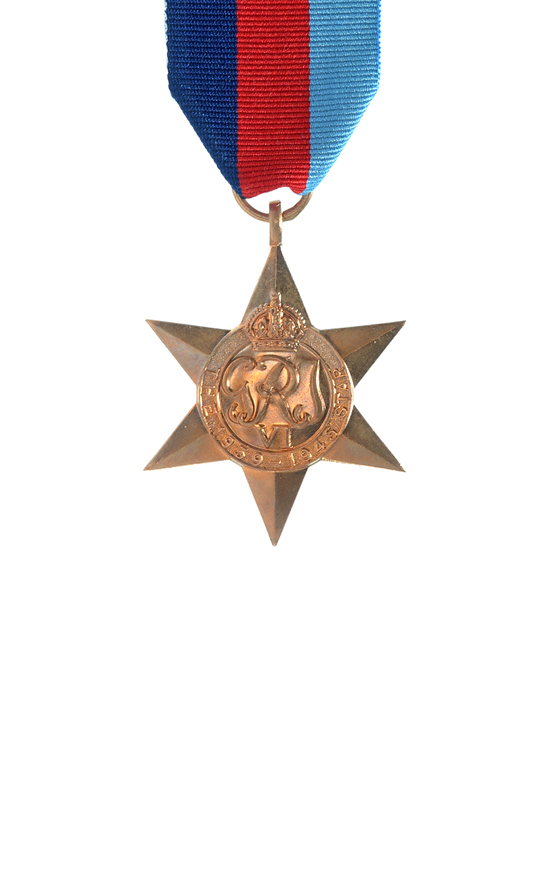
The 1939-45 Star is the first in a series of eight campaign stars instituted in 1945 to recognise service in World War Two. The ribbon has three equal vertical stripes of dark blue, red and light blue. The dark blue stripe symbolises the service of the Navy and the Merchant Navy, the red stripe symbolises the service of the Army, and the light blue stripe symbolises the service of the Air Force. The equal width bands represent the equal contributions of the three service arms towards victory. The ribbon was devised by King George VI. Two clasps could be awarded with this medal: ‘Battle of Britain’ and ‘Bomber Command’. Only aircrew would qualify for these clasps although a small number of Fleet Air Arm naval pilots flew for the air force and would be eligible for the ‘Battle of Britain’ clasp.
The Italy Star
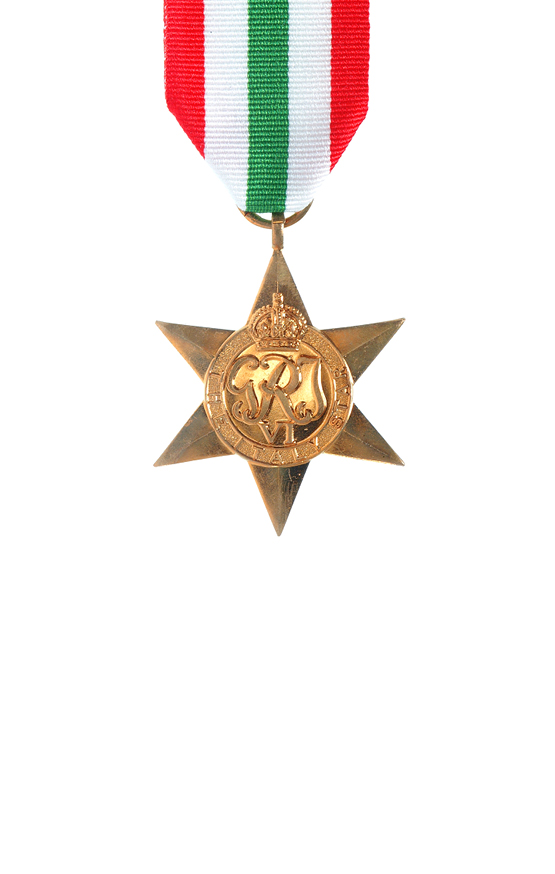
The Italy Star was awarded for operational service in Italy and adjacent countries in the Second World War between 11 June 1943 and 8 May 1945. No clasps were awarded. The ribbon uses the national colours of Italy; red, white and green as seen on the flag.
The France and Germany Star
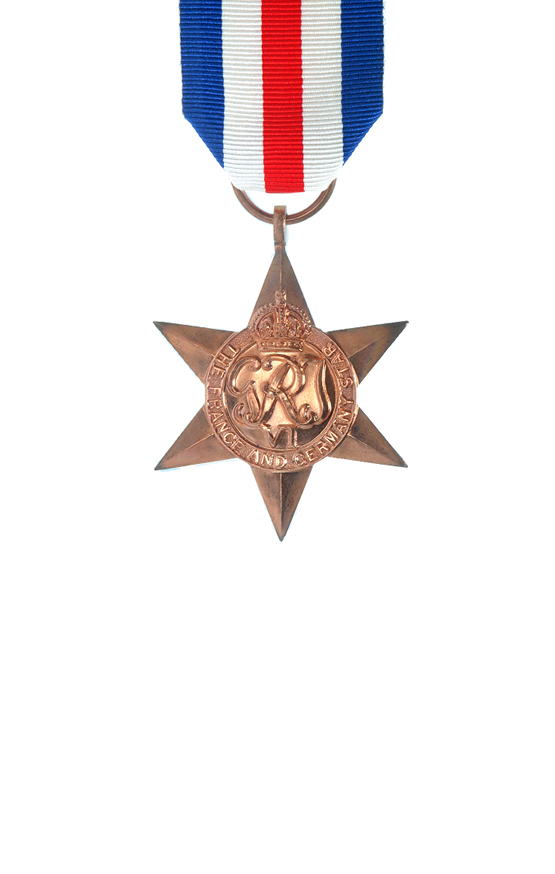
The France and Germany Star was awarded for service in the Second World War in France, Belgium, the Netherlands, Germany and adjacent sea areas, between 6 June 1944 and 8 May 1945. An ‘Atlantic’ clasp could be awarded with this medal. Personnel who qualified for both the France and Germany and the Atlantic Stars were awarded the first star but only a clasp in respect of the second. The ribbon uses the colours of the Union Jack; red, white and blue, which are also the national colours of France and The Netherlands.
The Defence Medal
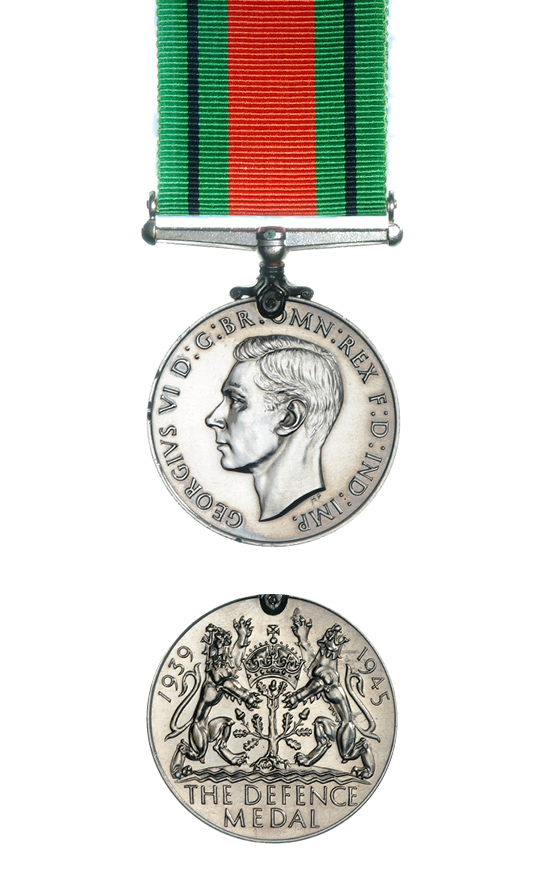
The Defence Medal was awarded to British and Commonwealth forces who served during the Second World War. It was awarded to New Zealand military personnel who served overseas in a non-operational area such as Great Britain, Palestine or Fiji. The ribbon’s flame-coloured orange centre band and green edge bands symbolise enemy attacks on Britain’s green and pleasant land. The narrow black stripes represent the black-outs against enemy air-attacks.
The War Medal 1939-1945

The War Medal 1939-45 was awarded across the British Commonwealth to all full-time members of the Armed Forces in the Second World War for 28 days service between 3 September 1939 and 2 September 1945, irrespective of where they were serving. The ribbon is the red, white, and blue of the (British) Union Flag. There is a narrow central red stripe with a narrow white stripe on either side. There are broad red stripes at either edge, the two intervening stripes being blue.
A bronze oak leaf on the medal ribbon denotes that the recipient was Mentioned in Despatches. To be Mentioned in Despatches a member of the armed forces had their name mentioned in an official report, written by a superior officer, and sent to a higher command. The report would describe the individual’s gallant or meritorious action in the face of the enemy.
The New Zealand War Service Medal
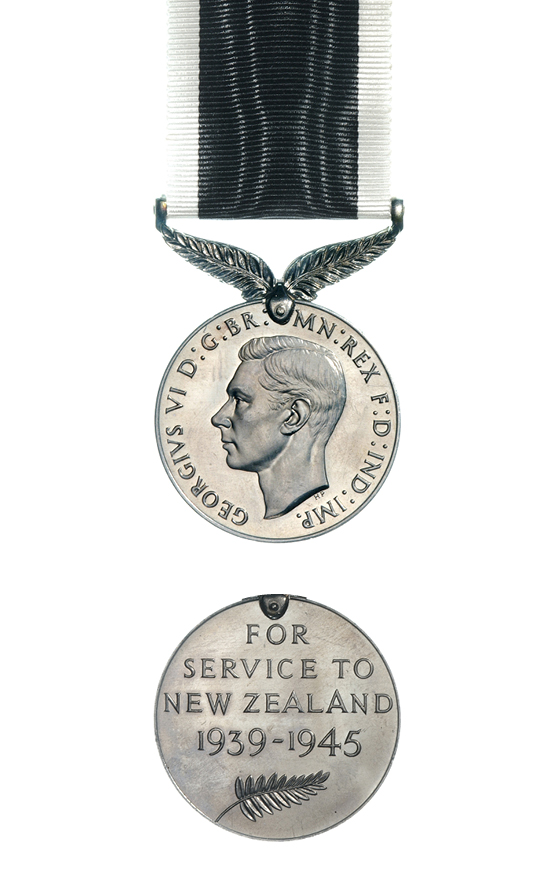
The New Zealand War Service Medal was awarded for 28 days’ full time service or six months’ part time service in the Second World War in any of the New Zealand Armed Forces including the Reserves, Naval Auxiliary Patrol Service, or Home Guard, between 3 September 1939 and 2 September 1945.
The Korea Medal

This medal was instituted in 1951, to recognise the service of Commonwealth troops in the Korean War between 2 July 1950 and 27 July 1953. It is sometimes referred to as the Queen’s Korea Medal to differentiate it from the United Nations Korea Medal. For naval forces, qualification is 28 days or more afloat in the operational area or at least one day of shore duty. The medal’s reverse features Hercules wrestling the Hydra – a symbolic representation of communism. The ribbon has alternating yellow and blue stripes. Blue represents the United Nations.
United Nations Medal Korea
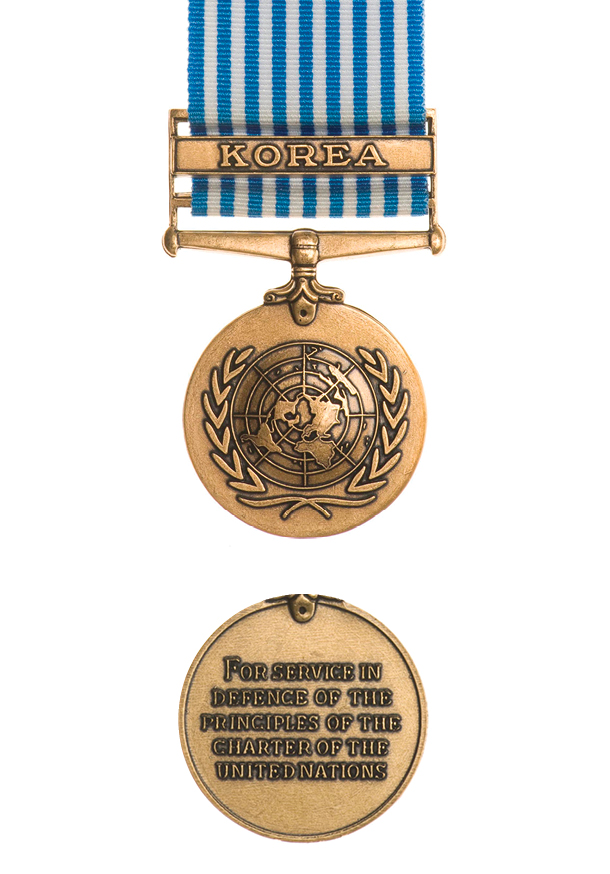
The United Nations Medal (Korea) was awarded for service during the Korean War and the year following the armistice (July 1950 to July 1954). It was the first international award created by the United Nations and features the UN emblem of a projection map of the world between two olive branches. The medal recognises the service of all military troops participating as part of the UN forces in Korea and was manufactured in the language of each country. It was also awarded to a limited range of civilians whose organisations were certified by the United Nations Commander-in-Chief as having directly supported military operations in Korea between 1950 and 1954.

